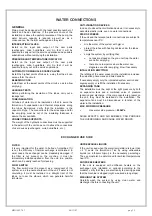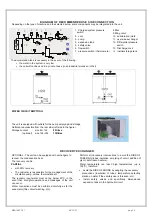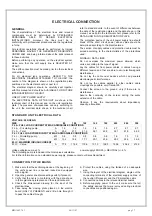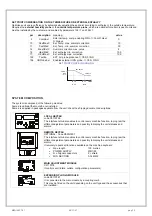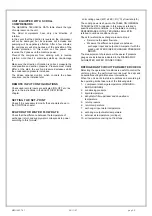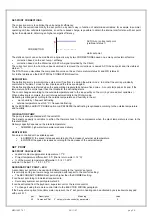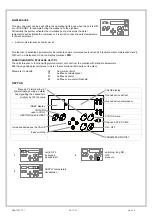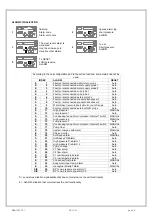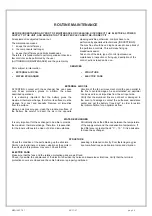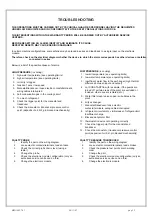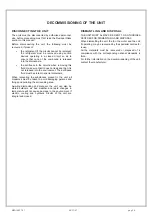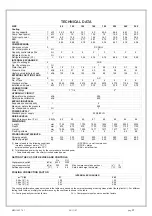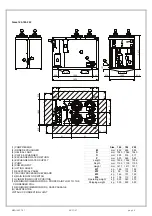
M0G140F7-01 06/11/07
pag
29
ROUTINE MAINTENANCE
BEFORE UNDERTAKING ANY SORT OF MAINTENANCE OR CLEANING, DISCONNECT THE ELECTRICAL POWER
SUPPLY TO THE UNIT, AND ENSURE THAT OTHER PEOPLE CANNOT RE-CONNECT IT .
All equipment is subjected to wear out.
The maintenance makes :
1. keeps the unit efficiency
2. the components last longer
3. keeps their efficiency and limits breakdowns
Therefore, it is fundamental to perform periodical checks: a
few controls can be performed by the user
(AUTONOMOUS MAINTENANCE) and they are mainly
cleaning activities; otherwise, controls have to be
performed by specialized technicians (INSPECTIONS).
The machine should have a log book used to keep track of
the performed controls. This will make fixing up
breakdowns easier.
Take note of the date, type of control (autonomous
maintenance, inspection or fixing up), description of the
control, actions taken and so on.
SERVICES
Parts subject to intervention:
•
EXTERNAL AIR COIL
•
WATER EXCHANGER
•
STRUCTURE
•
ELECTRIC FANS
EXTERNAL AIR COIL
ATTENTION: contact with the exchanger fins can cause
cuts. Wear protective gloves to perform the above
described operations.
It is extremely important that the battery gives the
maximum thermal exchange; therefore, its surface must be
cleaned from dust and deposits. Remove all impurities
from the surface.
Using an air pressure gun, clean the aluminum surface of
the battery. Be careful to direct the air in the opposite
direction of the fan air movement. Hold the gun parallel to
the fins to avoid damages. As an alternative, an aspirator
can be used to suck impurities from the air input side.
Verify that the aluminum fins are not bent or damaged. In
the event of damages, contact the authorized assistance
center and get the battery “ironed out” in order to restore
the initial condition for an optimal air flow.
WATER EXCHANGER
It is very important for the exchanger to be able to provide
the maximum thermal exchange. Therefore, it is essential
for the inner surfaces to be clean of dirt and incrustations.
Periodically check the difference between the temperature
of the supply water and the condensation temperature. If
the difference is greater than 8 °C – 10 ° C it is advisable
to clean the exchanger.
STRUCTURE
Check the condition of the parts making up the structure.
Paint so as to eliminate or reduce oxidation at the points in
the unit where this problem may occur. Check that the
panelling is fastened correctly. Poor fastening may give
rise to malfunctions and abnormal noise and vibration.
ELECTRIC FANS
Make sure that the fans and the relative protection grids are well fixed.
Check, if possible, the unbalances of the electro-fan evident by noise and anomalous vibrations. Verify that the terminal
protection covers are closed and the cable holders are properly positioned.

